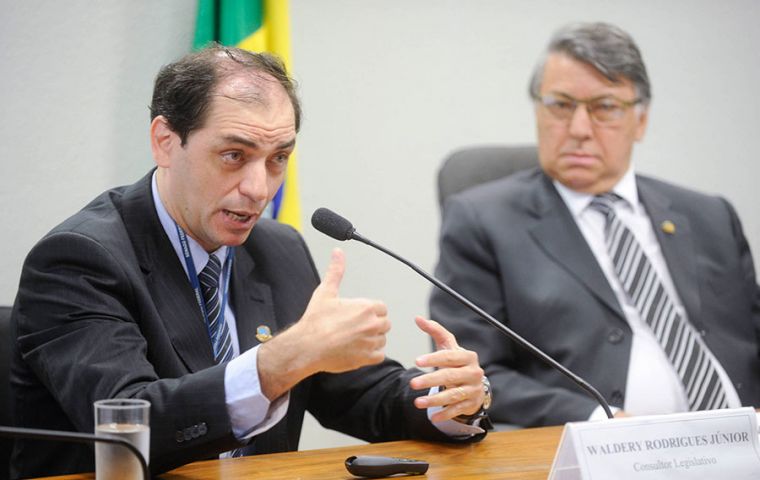MercoPress. South Atlantic News Agency
Brazil admits a budget deficit of 11,5% of GDP; ten years before public debt falls to 2019 level
 The government’s official forecast is for a 4.7% fall in GDP in 2020, according to Waldery Rodrigues, special secretary to the economy ministry
The government’s official forecast is for a 4.7% fall in GDP in 2020, according to Waldery Rodrigues, special secretary to the economy ministry Brazil’s government on Thursday revised its 2020 fiscal outlook, forecasting significantly higher debt and wider deficits due to the COVID-19 crisis, and said it will be over a decade before public debt falls back to last year’s level.
A surge in emergency spending and slump in tax revenues will require an even greater effort to get public finances back on track, the economy ministry said, indicating Brazil is in for a prolonged period of severe austerity once the immediate crisis passes.
The ministry now expects a central government budget deficit excluding interest payments of 795.6 billion Reais (US$ 149bn) or 11.5% of gross domestic product, compared with its previous forecast of a 675.7 billion reais shortfall, or 9.4% of GDP.
It also expects a wider public sector deficit of 828.6 billion Reais or 12% of GDP, up from 708.7 billion Reais and 9.9% of GDP.
Assuming a 6.5% decline in GDP this year, as per the latest consensus forecast in the central bank’s weekly ‘FOCUS’ survey of economists, the ministry said it now expects gross debt to reach a record 98.2% of GDP this year.
The government’s official forecast is for a 4.7% fall in GDP in 2020. Waldery Rodrigues, special secretary to the economy ministry, said this will be revised on July 10.
According to calculations from Brazil’s Treasury, the public sector will have to generate an average annual primary surplus of 1.76% of GDP in the years 2021-29 if gross debt at the end of that period is to get back to where it was last year as a share of GDP.
That is a significantly more challenging fiscal adjustment than the 0.26% of GDP previously forecast, Treasury said.
“The simulations are hypothetical, but reveal the fiscal challenges,” Treasury said in a report on its website.
”They show the need to proceed with reforms that will spur the fiscal adjustment and sustained growth. This will improve debt dynamics ... (and help) keep interest rates low and inflation under control,” it said.
Rodrigues insisted that maintaining the spending cap rule is the fundamental pillar of the government’s fiscal policy.




Top Comments
Disclaimer & comment rulesCommenting for this story is now closed.
If you have a Facebook account, become a fan and comment on our Facebook Page!